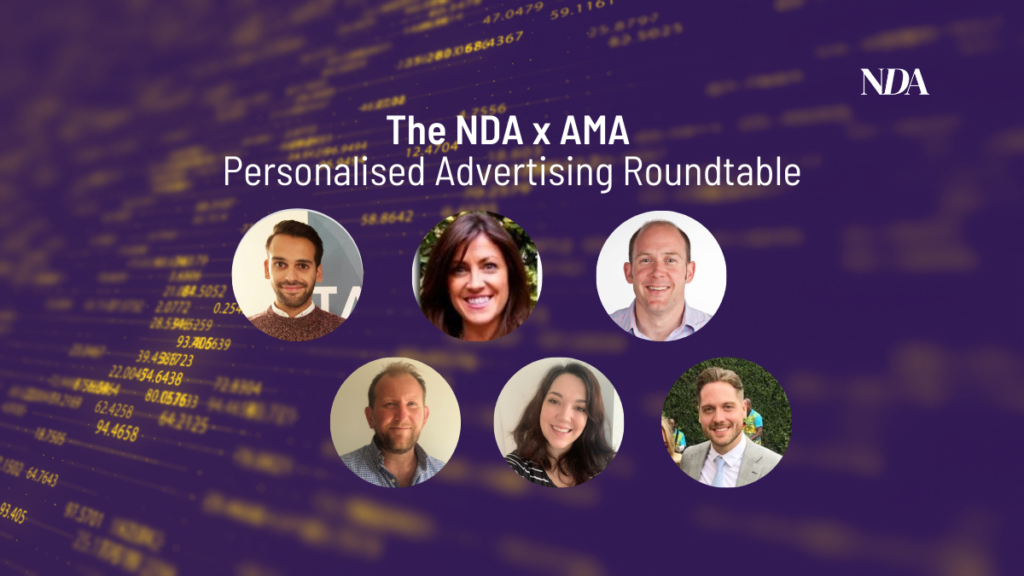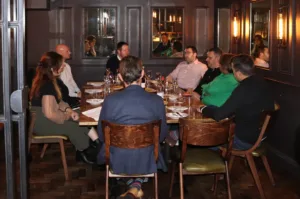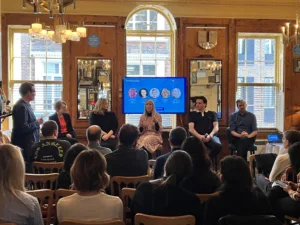The final report from a roundtable from NDA and A Million Ads discussing personalisation within digital audio. We heard insights from Charlie Brookes, Chief Revenue Officer, Digital Audio UK at Bauer Media; Josh Woodhouse, UK Director of Sales at Acast; Maria Cadbury, Director of Strategic Partnerships at Say It Now; Shanil Chande, UK Commercial Director at Hawk, and Richard Williams, Commercial Director, and Sophie Taylor, Partnerships Director, at A Million Ads.
Data being used to personalise advertising has been something that has seemingly made consumers uncomfortable for a number of years now. Despite this, research from A Million Ads found that 61% of people are happy to give permission for their data to be used in order for them to receive more relevant ads.
Don’t be weird about it
Now, that stat may be music to the ears of many advertisers but, according to A Million Ads Williams, the depth of the personalisation you deliver should “depend on the environment or the brand”.
“When we’re speaking to a banking brand, we tell them not to use any personal data that could become construed as them knowing too much about a person,” he said “That could be completely different to a gin manufacturer, which could say something like ‘go and enjoy a gin and tonic on Wimbledon Common’ or whatever it is. So, it’s about knowing the right level of personalisation for the right environment, but also the right vertical and the right brands.”
Bauer’s Brookes agrees that a lot of thought should be put into personalisation by advertisers to avoid becoming “creepy” and making “people feel a bit uncomfortable”, suggesting that the best personalisation “shouldn’t be noticeable” and that it’s really up to the creatives to figure out what they want the audience to get from the ad.
“If you can target this thing, make it relevant, and add some value, they’re going to listen to an ad anyway,” Brookes explained. “I think it’s up to the creatives. We can help with the audience or the context, but it does require the creatives to think about what they want the consumer to do.”
Say It Now’s Cadbury feels it all comes down to the value being offered to the consumer and – particularly in the voice assistant space – them only having to interact with ads that are relevant to them.
“In the space I work in, you have to hear an audio campaign and say, ‘I like that, so I’m going to ask my smart speaker’. That’s a really important step change, and that’s why personalisation works really well within this space, because people only interact when they feel it’s really relevant,” Cadbury said. “The language and the tone of voice is really important, and then it’s making sure of what you’re offering them.”
Context is…
One of the ways that advertisers are able to deliver personalised and relevant advertising to consumers is through the use of contextual signals, which are completely free of personal data.
A common example of contextual relevance is the use of weather or time of day, which is a very straightforward way of personalising an ad. However, through a medium like podcasts, there is an opportunity to take that use of context slightly further and utilise the podcast hosts to deliver the message.
“If someone is listening to a foodie podcast and you’re able to match that with a relevant brand such as a supermarket.Then you’re able to have that personalised endorsement of someone like Jessie Ware. And, because it’s morning or because it’s cold, she’s endorsing a breakfast range or a warm stew,” said Acast’s Woodhouse. “That can be really effective in itself. That goes back to the idea of value, rather than it being ‘I know something about you’. It’s like, ‘I’m going to inspire you with something that’s going to help’.”
A Million Ads’ Taylor added: “Being able to be contextually relevant with a product by having that rotation element is what people are finding quite interesting at the moment, rather than just using a location call out. You can say ‘come to your closest store, it’s here’, but then what are they going to go to the store for?
“Making it contextually relevant with that rotation is something that I think is definitely appealing more to brands, especially because you don’t need cookies to know that somebody has gone to a site and clicked on Coca-Cola or a bottle of booze because it’s Friday night. You can make assumptions based on people’s habits, because we are creatures of habit.”
On the other hand, there are opportunities to be a little more innovative when it comes to context, according to Hawk’s Chande.
“Anything with an API can tie into personalisation,” he said. “The removal of third-party cookies will bring that kind of innovation back, because big data is growing. Supermarkets have more data. Even smaller businesses have more data. So, how do we use that data through an API to power personalisation?
“Reconceptualising our thoughts around data will allow us to move away from what we know about this user, and we can start to think about those real-life moments that tie to that personalised message.”
*A Million Ads is a client of Bluestripe Communications, owned by Bluestripe Group, the owner of NDA.









